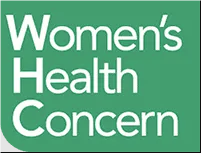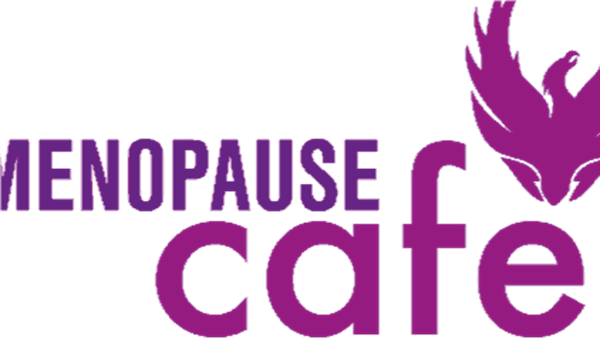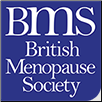Vaginal Health
There are two distinct areas of female genitalia:
Vulva
The vulva encompasses your external genitalia and includes your mons pubis, clitoris, labia and the opening of your vagina and your urethra.
Vagina
The vagina is the canal that connects the vulva to the cervix and uterus. It allows for monthly menstruation and childbirth.
Discharge is normal and most women and girls get it. It’s a fluid or mucus that helps clean the vagina, keep it moist and protect it from infection. Normal discharge will be clear or whitish with a neutral smell, and may be thick, sticky, slippery or wet.
If you experience a sudden change, such as a strong or unpleasant odour, a change in colour, consistency or amount, then you should make an appointment to see your GP.
It is important to maintain your vulvovaginal health, but doing so is simple and easy. Some basic tips include:
- Wash daily with warm water – soap isn’t necessary but if you do use it, opt for a gentle, fragrance-free soap. Do not wash inside your vagina and do not use a washcloth.
- Wear cotton underwear rather than silk or polyester and avoid tight-fitting clothes. Forgo underwear altogether at night to reduce sweat being trapped around the vulva.
- Wipe front-to-back after using the toilet.
- Avoid scented sanitary products.
- Stay well hydrated.
- Practice safe sex – use a latex-free condom, a scent-free, water-based lubricant, and urinate after sexual activity.
Your vagina will have a natural scent and you shouldn’t seek to change it. If you’re worried about it, or your vagina starts to smell unpleasant or strongly, speak to your GP.
Conditions
There are a number of common conditions that can affect women, some of which include:
- Endometriosis – where the lining of the uterus grows in other areas around the womb, such as the ovaries and fallopian tubes.
- Adenomyosis – where the lining of the utuerus grows into the muscle in the wall of the womb.
- Fibroids – non-cancerous growths that develop in or around the womb.
- Ovarian cysts – a fluid-filled sac that develops on an ovary. They’re very common and usually do not cause symptoms.
- PCOS (polycystic ovary syndrome) – the 3 main features are irregular periods, excess androgen (“male” hormone) that may cause physical signs such as excess body/facial hair, and enlarged ovaries that contain many fluid-filled sacs (follicles). Despite the name, you do not actually have cysts if you have PCOS.
- PID (pelvic inflammatory disease) – an infection of the reproductive system including the womb, fallopian tubes and ovaries that is typically caused by a bacteria caused by STIs.
- Pelvic organ prolapse – when 1 or more of the organs in the pelvis slip from their normal position and bulge into the vagina. It happens when the muscles and tissues that support the organs become weakened.
- Vaginitis – soreness and swelling in and around the vagina. It’s common and can be caused by many things, such as hormone changes, skin conditions, STIs or thrush.
- Vaginismus – when the vagina suddenly tightens up when you try to insert something into it. It is an automatic reaction that you can’t control and can be painful and upsetting.
- Bartholin’s cyst – a small fluid-filled sac just inside the opening of your vagina. You may feel a soft, painless lump.
- Thrush – a common yeast infection. In women, it can cause itching and irritation around the vulva and vagina, cottage cheese-like discharge, soreness when you pee.
- Bacterial vaginosis – a common cause for unusual discharge.
- Mastitis – when your breasts become swollen, hot and painful. It is most common in breastfeeding women.
If you are concerned you are suffering with a condition, it is important to make an appointment and discuss it with your doctor.
Periods
A period, also known as menstruation, is the regular discharge of blood and mucosal tissue from the inner lining of the uterus through the vagina. Your utuerus contracts during your period to expel the lining, which causes pain and discomfort in most women. It is usually the worst on your first day and eases as your period gets lighter.
Getting your period is a part of puberty and you will generally get your first period between the ages of 12 and 15, though it is not unusual to get your period as young as the age of 8. A delay in starting periods isn’t usually a cause for concern. Most girls will be having regular periods by age 16 to 18.
An average menstruation cycle takes place over 28 days, with about 5 to 7 days of bleeding. When your period is heaviest, the blood will be bright red. On lighter days, it may be pink or brown. Typically, you’ll lose 1 to 5 tablespoons of blood, though some women bleed more heavily than this.
You can buy period products to soak up or collect blood during your period, such as:
- Pads
- Tampons
- Menstural cups
It is common that the changes in your hormone levels before your period can cause physical and emotional changes, which is known as PMS (premenstrual syndrome). Typical symptoms include feeling bloated, breast tenderness, mood swings, acne, headaches, low sex drive.
Your periods will continue until you reach the menopause, which usually happens when you are in your mid-40s to mid-50s. Your periods will become less frequent over a few months or years before stopping altogether.
Your periods can change – for example, they may last longer or get lighter. It does not necessarily mean there is a problem, but it should be investigated.
Bleeding between periods, after having sex or after the menopause needs to be checked by a doctor.
If you miss a period and have had sex, you could be pregnant. However, if you miss 3 consecutive periods and have a negative pregnancy test, you should see a doctor.
Menopause
Menopause is when your periods stop due to lower hormone levels. Menopause will happen naturally between the ages of 45 and 55, but can happen earlier. It can also happen for reasons such as surgery to remove the ovaries or the uterus, cancer treatments, or genetics.
Perimenopause is when you have symptoms of menopause but your periods have not stopped. Perimenopause ends and you reach menopause when you have not had a period for 12 months.
Symptoms of menopause can be:
- Hot flushes
- Mood swings
- Brain fog
- Trouble sleeping and night sweats
- Vaginal dryness and itching
- Palpitations
- Headaches and migraines
- Muscle aches and joint pains
Symptoms can start months or years before you start and carry on after your periods stop. They can also change with time.
There are medical treatments available to help alleviate the symptoms. The main medicine treatment is Hormone Replacement Therapy (HRT).
HRT involves using oestrogen to replace your body’s own levels. There are different types and doses of HRT. It can come as:
- Skin patches
- A gel or spray to put on the skin
- Implants
- Tablets
If you have a uterus you will also need to take progesterone to protect the lining of your womb from the effects of oestrogen. Progesterone comes as:
- Patches, as a part of a combined patch with oestrogen
- IUS
- Tablets
As well as medical treatment, there are a number of things you can do to help your physical and mental wellbeing during perimenopause and menopause:
- Exercise regularly
- Eat a healthy diet
- Have calcium-rich food
- Keep a regular sleep schedule and get plenty of rest
- Talk to other people going through the same thing
There are vaginal moisturisers and lubricants to ease vaginal dryness without needing a prescription. You can also be prescribed an oestrogen tablet, cream or ring that you insert into your vagina. It’s safe to use vaginal oestrogen with HRT.
If you pay for NHS prescribed HRT medicine 3 or more times in 12 months, you can get a Prescription Prepayment Certificate to help you save money. It is a one-off payment of £19.80 that covers an unlimited number of certain HRT medicines for 12 months.
Cervical Screening
The cervix is the opening to your womb from your vagina. All women aged 25 to 64 are invited by letter to cervical screenings, previously called a smear test, to check the health of their cervix.
If you have a cervix, it is very important you go for cervical screening, as it is a test to help prevent cancer and one of the best ways to protect yourself from cervical cancer.
During the screening, a small sample of cells will be taken from your cervix and checked for certain types of human papillomavirus (HPV) that can cause changes to the cells of your cervix.
HPV is a common virus and most people will get it at some point. You can get it through any kind of sexual contact.
Sometimes you may be asked to have another test 3 months later, but this does not mean that there is anything wrong, just that the results were unclear.
Most people will not have HPV and return a HPV negative result. This means your risk of cervical cancer is very low and you do not need any further tests to check for abnormal cell changes in your cervix. You will be invited for another screening in 3 or 5 years.
If you return a HPV negative result, you may need another cervical screening test in 1 year or colposcopy. There are 2 different kinds of HPV positive results:
- HPV found but no abnormal cell changes – you’ll be invited in 1 year and 1 year again f you still have HPV. If you still have HPV after 2 years, you’ll be asked to have a colposcopy.
- HPV found and abnormal cell changes – you’ll be asked to have a colposcopy.
Try not to worry if you have HPV positive results and have been referred for a colposcopy – any changes to your cells will not get worse while you are waiting for you appointment.
Breast Health
It is important for women to stay vigilant with their breast health.
Breasts serve as the mammary gland in humans and develop during puberty. They are made up of a network of ducts that coverge at the nippe, enveloped by subcutaneous fat. Breast tissue can extend from the collar bone to the sternum and into the armpit.
Breasts come in all sorts of shapes and sizes and can change throughout your life due hormonal changes during puberty, menstrual cycles, pregnancy, breastfeeding, menopause, etc.
You should check your breasts regularly, at least once a month, so that you can familiarise yourself with what is normal for you and make it easier to notice any changes.
To check your breasts or chest:
- Look at your breasts or chest in a mirror to look for any changes. Start with your arms by your sides and then raise them.
- Feel around each breast or side of your chest in a circular motion all the way up to your collarbone and under each armpit. Use a mix of light and firmer pressure. Do not press so hard it hurts.
- Feel around and over each nipple.
You may find it easier to feel your breasts or chest in the shower or lying down.
If you feel a lump or swelling or see a change that is not normal for you, it is important to make an appointment to see your GP.
You will be invited for a breast screening, also known as a mammogram, every 3 years between the ages of 50 and 71. See the NHS page for more information on when you’ll be invited, what will happen during your appointment and further information.
Breast pain is common and is usually linked to periods. It can start up to 2 weeks before your period starts and last until your period ends. It will usually go away when the period ends. Breast pain by itself is unlikely to be a symptom of cancer.
If you are experiencing pain in your breast or armpit that does not go away, then you should make an appointment to see your doctor.
Resources
Wellbeing of Women
A charity that helps women and fundraises for research into women’s health and wellbeing.
Menopause Cafe
Hubs throughout the UK that provide an accessible, confidential and respectful place to meet other women affected by menopause.
British Menopause Society
A specialist authority for menopause and post reproductive health in the UK.
Woman’s Trust
A specialist mental health charity providing free counselling and therapy for women who have experienced domestic abuse.








